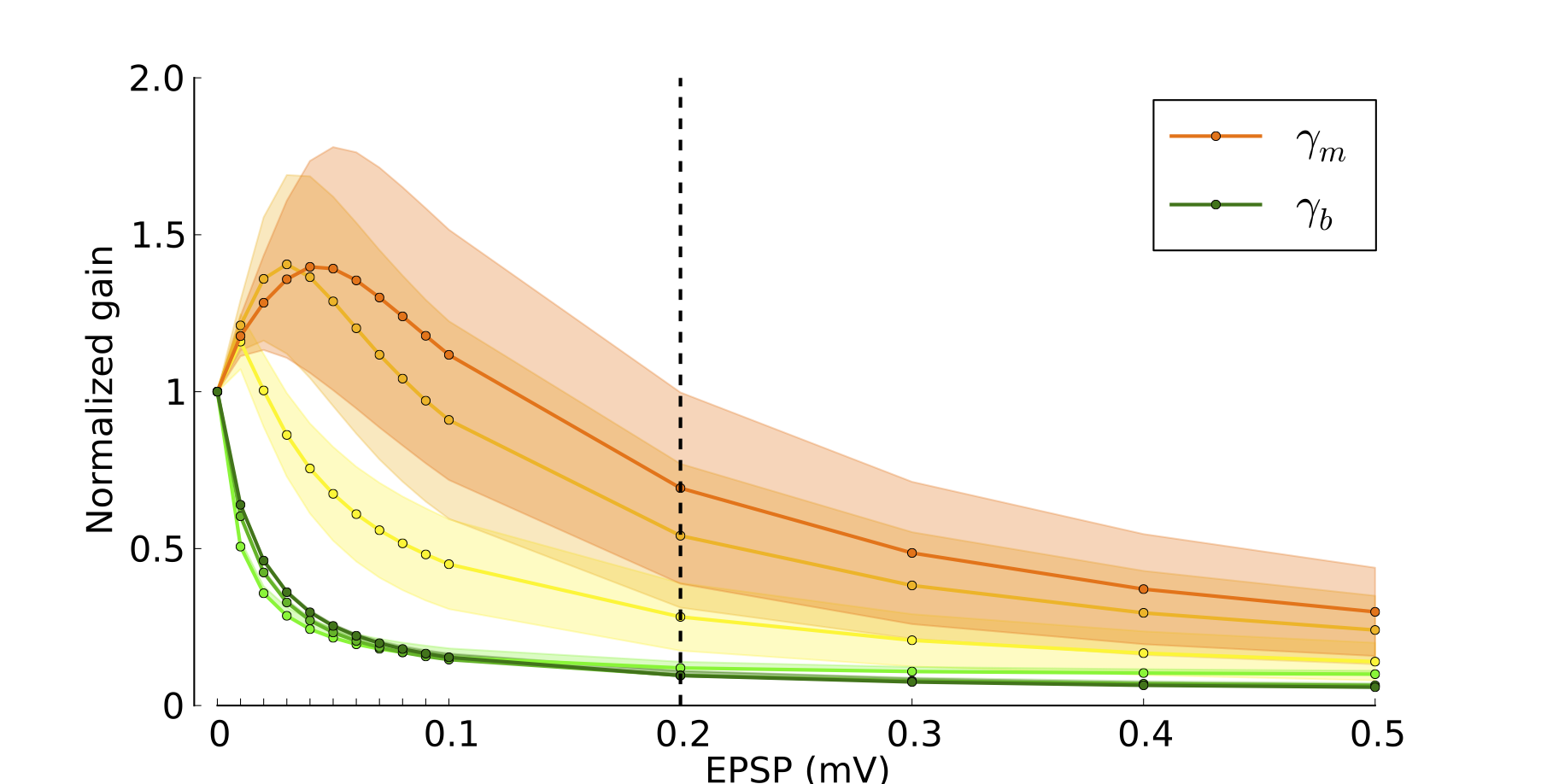Simple Solutions
When input from sensory organs like eyes and ears arrives in the cortex, it is edited by billions of neurons before shaping our percepts of the world. In the mammalian brain, important steps of this processing take place in the primary sensory areas of the neocortex. For processing the retinal image, for instance, some basic computations are performed in the primary visual area (V1), like extracting edge orientations or color information.
For any stimulus feature of this sort, the cortex needs to execute some general signal processing tasks, like enhancing the selectivity and reliability of the input signal. Which basic network structures and neuronal mechanisms are indeed recruited by different animals to reach these goals is still a matter of debate. Clustering of neurons with same feature selectivity on a smooth feature map, where neighboring neurons show similar feature selectivity, might be a possible strategy of carnivores and some primates. This seems less plausible in rodents, where the visual cortex has a “salt-and-pepper” distribution of features, i.e. neighboring neurons have mixed selectivities and neurons with similar orientation selectivity are scattered spatially.
In a new publication in the journal SpringerPlus, Sadra Sadeh, Stefano Cardanobile and Stefan Rotter from the Bernstein Center Freiburg and the cluster of excellence BrainLinks-BrainTools have analyzed these mechanisms in randomly connected recurrent networks, which they simulated in a computer. Their model of the dynamics of sensory networks reveals which computational principles are at work in enhancing sensory processing. They assume that nerve cells in this area are unspecifically connected, and that inhibition, instead of excitation, is the dominant mode of “wiring” between the cells. Therefore, the researchers propose a generic model for the function of local cortical networks that yields the suppression of redundant information, the amplification of feature selectivity, and an invariance of sensory representation with respect to changes in the intensity of a stimulus. All these basic, but fundamentally important properties are obtained as a natural result of random recurrent interactions in a network, and do not require more complicated network architectures. The theoretical study by Sadeh and his colleagues therefore provides a prediction that can be tested experimentally by neurobiologists.
Original publication:
Sadra Sadeh, Stefano Cardanobile and Stefan Rotter (2014) Mean-field analysis of orientation selectivity in inhibition-dominated networks of spiking neurons. SpringerPlus 3: 148, 2014
A

(A) Reduced circuit model for selective operation of the network on baseline (B) and modulation (M) components of input. Stimulus (input): s, output response: r, α: feedforward gain, β: feedback gain, γ: closed-loop gain. The common mode is selectively suppressed in the green pathway as a result of inhibition-dominance in the network, while processing of modulation in the orange pathway is not affected by this attenuation.
B

(B) Different gains for processing of baseline and modulation in the network. Normalized baseline (green) and modulation (orange) gains are plotted for a network with a fixed connectivity, but different strengths of recurrent synaptic couplings (parameterized by the strength of excitatory post-synaptic potential, EPSP, on the x axis). Shaded regions represent mean ± std and lighter colors correspond to lower contrasts.

